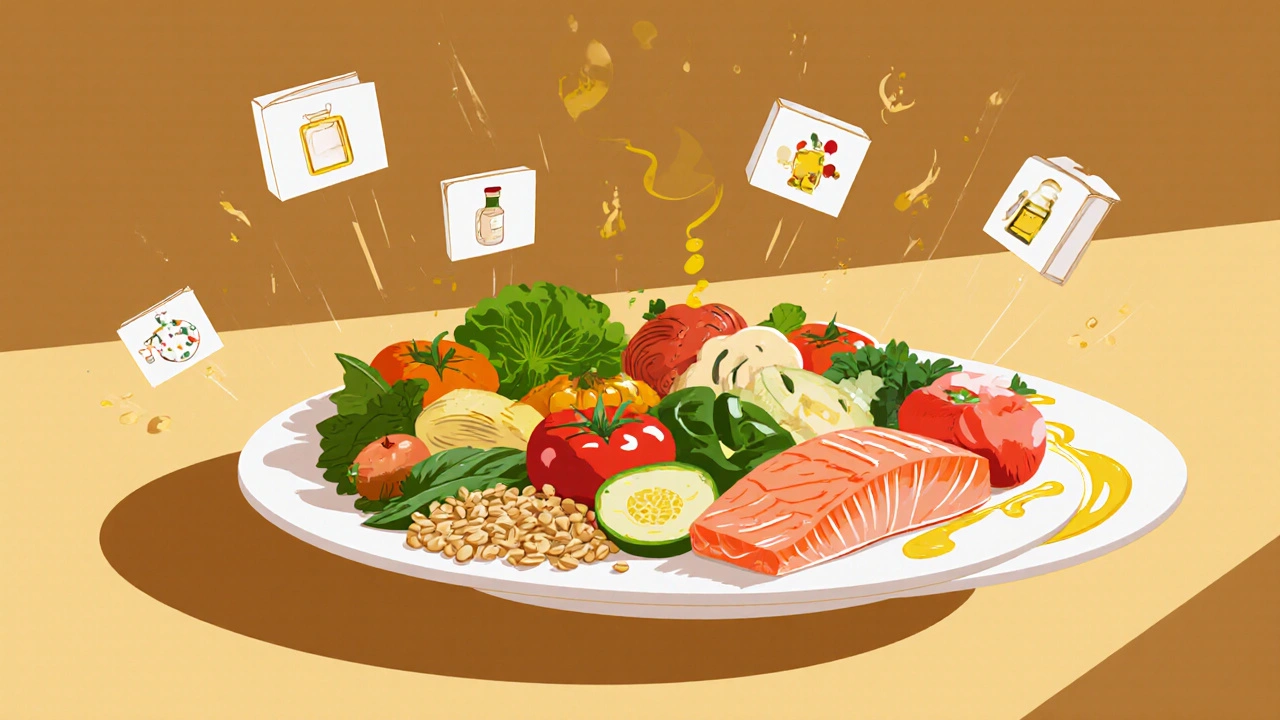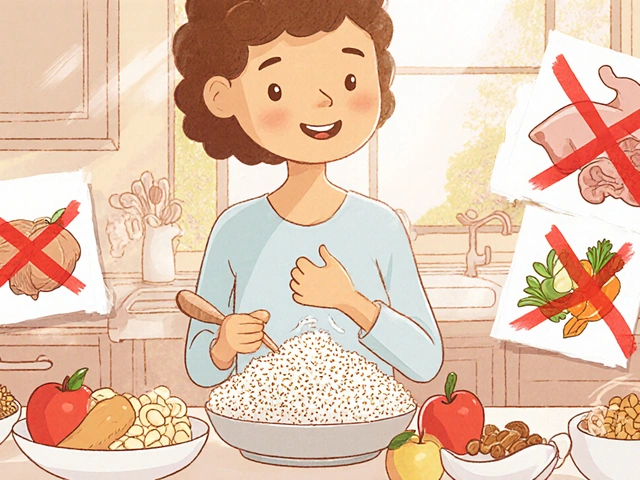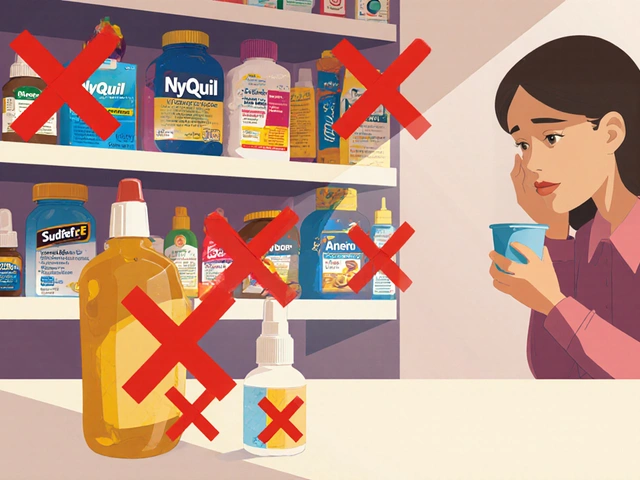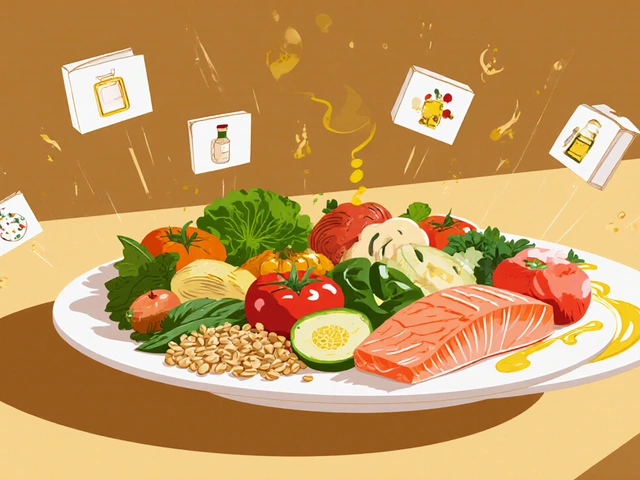When your immune system turns against your own body, food isn’t just fuel-it becomes a tool. For people living with autoimmune diseases like rheumatoid arthritis, Hashimoto’s thyroiditis, or inflammatory bowel disease, what’s on their plate can mean the difference between daily flare-ups and quiet, manageable symptoms. This isn’t about miracle cures. It’s about science-backed ways to calm down a misfiring immune system by changing what you eat.
What Anti-Inflammatory Eating Actually Means
Anti-inflammatory eating isn’t a new fad. It’s a pattern of choosing foods that help reduce chronic inflammation-the invisible fire driving autoimmune damage. Unlike diets that cut out entire food groups for weight loss, this approach focuses on what to add, not just what to remove. The goal? Lower levels of C-reactive protein (CRP), IL-6, and other inflammatory markers that show up in blood tests and correlate with worse symptoms. The Mediterranean diet leads the pack in research. It’s not fancy. It’s daily vegetables (7-10 servings), fruits, whole grains, legumes, olive oil, and fatty fish like salmon or sardines two to three times a week. Nuts, seeds, and herbs like turmeric and rosemary round it out. A 2021 study of 2,500 people with rheumatoid arthritis found those following this pattern had a 22% drop in disease activity scores and 18% lower CRP compared to people eating a standard Western diet. The Autoimmune Protocol (AIP) diet takes a stricter route. It removes grains, legumes, dairy, eggs, nuts, seeds, nightshades (like tomatoes, peppers, and potatoes), and coffee for 5-8 weeks. Then, one food at a time is slowly added back to see what triggers symptoms. People with Hashimoto’s and IBD often report big improvements-up to 70% in observational studies. But there’s a catch: it’s hard to sustain. Social dinners, travel, and even grocery shopping become minefields.What Foods Fight Inflammation-and Why
Not all plant foods are equal. The real power lies in specific compounds that interact with your immune cells.- Fatty fish (salmon, mackerel, herring): Two to three servings a week deliver 250-500mg of EPA and DHA. At doses of 2-4g daily, these omega-3s reduce pro-inflammatory cytokines by 15-25%, according to a 2023 genetic study.
- Leafy greens and berries: Spinach, kale, blueberries, and strawberries are packed with polyphenols. These block NF-κB, a key switch that turns on inflammation. Lab studies show up to 40% reduction in this pathway.
- Extra virgin olive oil: Just two tablespoons a day provide oleocanthal, a compound with effects similar to ibuprofen. It’s not just fat-it’s medicine.
- Fiber-rich foods: Beans, lentils, oats, and vegetables feed good gut bacteria. These bacteria produce butyrate, a short-chain fatty acid linked to 20% lower IL-6 levels. Aim for 30g of fiber daily.
- Ketogenic diets: Very low-carb eating (20-50g carbs daily) raises β-hydroxybutyrate (βHB), a ketone body. A 2023 study from UCSF showed βHB levels above 1.0 mmol/L blocked T helper 17 cells-immune cells that attack the body in MS and other autoimmune diseases. This was shown in mice, but early human trials are underway.
What to Avoid: The Real Culprits
The opposite of anti-inflammatory foods are the silent agitators. These aren’t just empty calories-they actively fuel inflammation.- Added sugars: More than 25g per day (about two cans of soda) spikes insulin and triggers inflammatory pathways. Even fruit juice counts.
- Refined carbs: White bread, pastries, and pasta break down fast, causing blood sugar spikes that ramp up CRP.
- Trans fats: Found in fried foods and margarine, these are proven to raise inflammation markers. They’re banned in many places-but still lurking in packaged snacks.
- Excessive saturated fat: Not all fats are bad, but too much from processed meats and full-fat dairy can tip the balance.
- Processed foods: Anything with unpronounceable ingredients, high sodium, or preservatives is likely pro-inflammatory. The Western diet, dominated by these foods, is linked to 30-50% higher CRP levels.
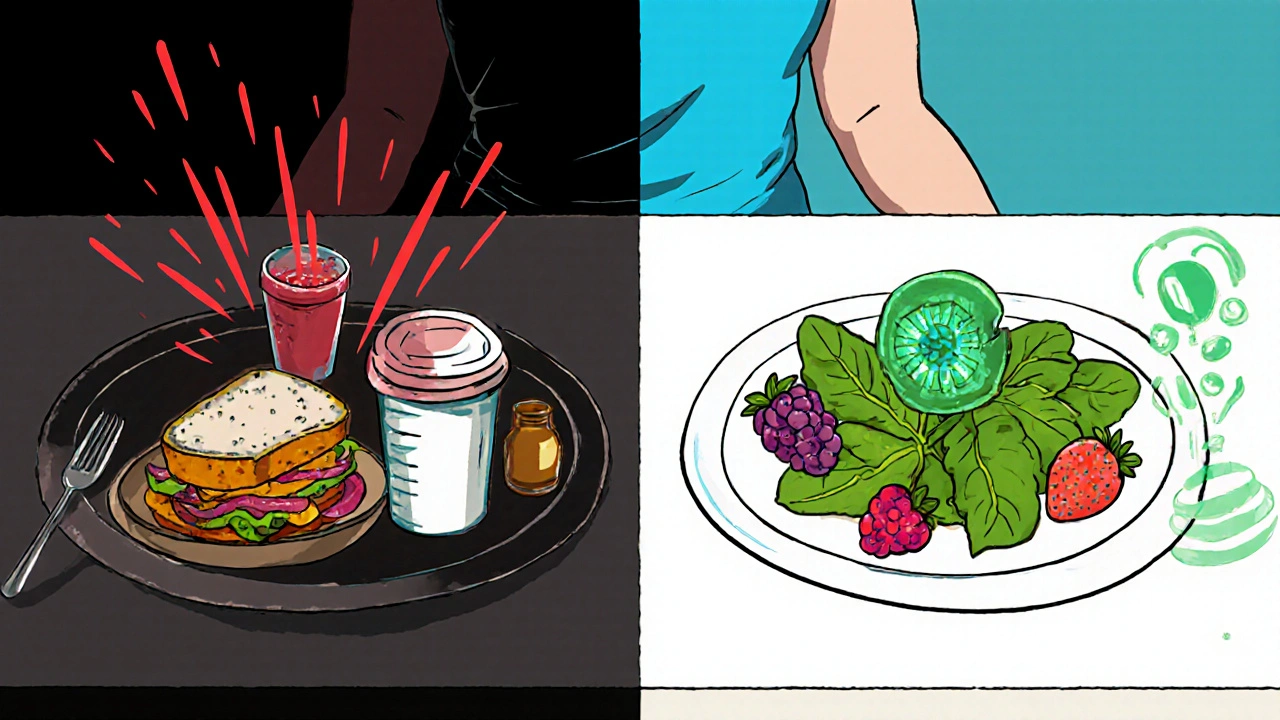
Comparing the Top Diets: What Works Best?
| Diet | Key Features | Best For | Evidence Strength | Adherence Rate (6 Months) |
|---|---|---|---|---|
| Mediterranean | Fruits, veggies, whole grains, olive oil, fish, legumes | Rheumatoid arthritis, general inflammation | Strong (multiple RCTs) | 85% |
| AIP (Autoimmune Protocol) | Elimination phase, then reintroduction; removes nightshades, eggs, nuts, dairy | Hashimoto’s, IBD, psoriatic arthritis | Moderate (observational, small trials) | 40% |
| Vegetarian/Vegan | Plant-only; high fiber, no meat or dairy | General inflammation, weight management | Moderate (meta-analyses) | 60% |
| Ketogenic | Very low carb, high fat; induces ketosis | MS, epilepsy, early-stage autoimmune | Preliminary (mouse studies, small human trials) | 45% |
The Mediterranean diet wins on evidence and sustainability. It’s not perfect-it costs about $50-75 more per week than a standard American diet-but it’s the most proven. AIP shows promise for symptom relief, especially for people who’ve tried everything else. But it’s not for everyone. The ketogenic diet is exciting scientifically, especially after the 2023 Cell Reports study linking ketones to immune cell suppression. But human data is still thin.
Real People, Real Results
Behind the numbers are real stories. On Reddit’s r/Autoimmune community, 68% of 1,247 respondents reported symptom improvement after switching to an anti-inflammatory diet. One person wrote: “After six weeks on the Mediterranean diet, my morning stiffness dropped from two hours to 30 minutes.” Another said eliminating nightshades cut their psoriatic arthritis pain in half. But it’s not all smooth sailing. The same survey found 78% struggled with social situations. “I can’t go to birthday parties without feeling like I’m eating the wrong thing,” one user shared. Others reported fatigue during the first weeks of keto, or constant worry about cross-contamination on AIP. The Arthritis Foundation found 72% of respondents felt dietary changes helped-but 58% said conflicting advice made it hard to start. That’s the biggest barrier: noise. Blogs, influencers, and conflicting studies make it hard to know what’s real.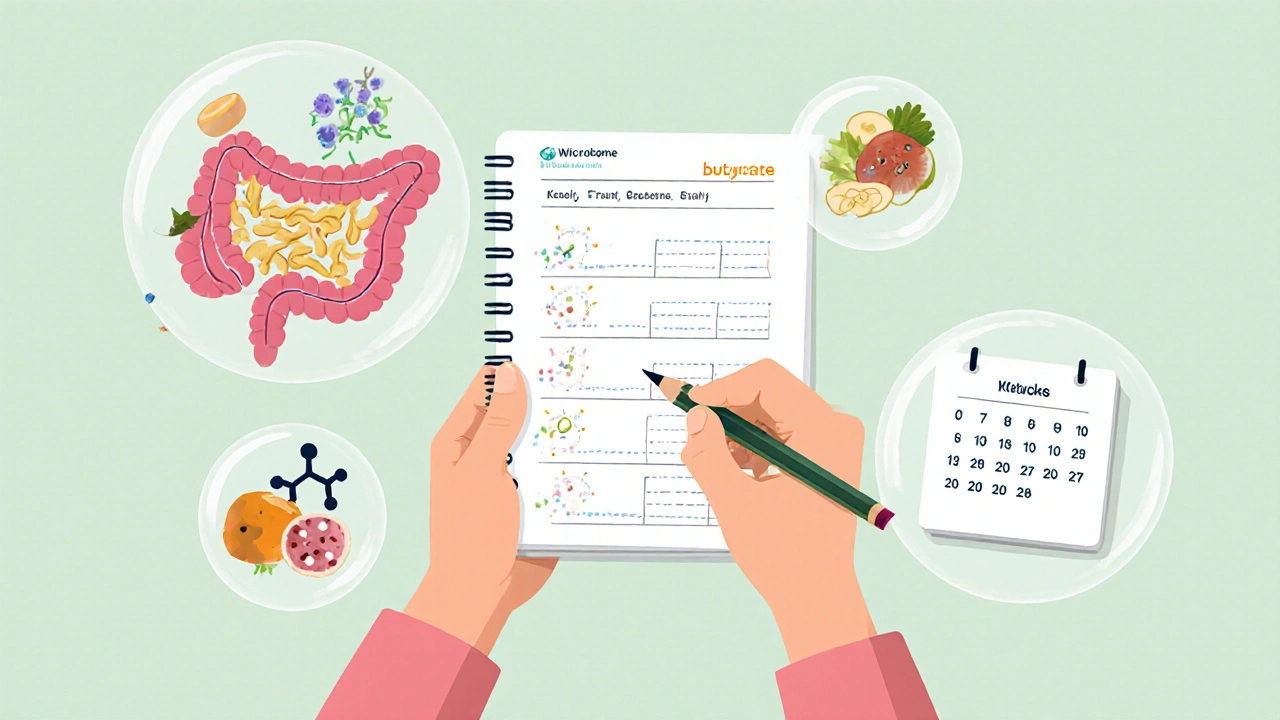
How to Start Without Overwhelm
You don’t need to overhaul your life overnight. Start small:- Swap one thing: Replace white bread with sourdough or rye. Swap soda for sparkling water with lemon.
- Add veggies: Aim for one extra serving of leafy greens daily. Add spinach to your smoothie or eggs.
- Choose fish twice a week: Canned salmon or sardines are affordable and easy.
- Use olive oil: Drizzle it on salads, roasted veggies, or even toast. Skip the butter.
- Track symptoms: Use a simple journal. Note what you ate and how you felt the next day. Look for patterns.
If you’re considering AIP or keto, work with a registered dietitian who understands autoimmune conditions. The American College of Lifestyle Medicine found that 83% of people who got professional help stuck with their diet after 12 months. Only 42% did on their own.
What’s Next? Science Is Evolving
The field is moving fast. In 2023, researchers found that ketones from a low-carb diet trigger gut bacteria to produce indole lactic acid (ILA), which directly blocks harmful immune cells. This isn’t just about food-it’s about designing supplements that mimic these effects. The NIH is funding a major 5-year trial called DIETA, which will compare the Mediterranean diet to standard care in 1,000 early rheumatoid arthritis patients. Results are due in 2026. Meanwhile, companies are testing microbiome analysis to personalize diets. Could your gut bacteria tell you whether you should avoid nightshades or not? That’s the next frontier.Final Thought: Food as Medicine, Not a Cure
Anti-inflammatory eating won’t reverse autoimmune disease. But it can quiet the storm. For many, it means fewer flares, less pain, and less reliance on meds. It’s not a magic bullet-but it’s one of the few tools you have direct control over. The evidence is clear: what you eat matters. Not because it’s trendy, but because biology doesn’t lie. Your immune system responds to what you feed it. Choose wisely.Can diet really help with autoimmune diseases?
Yes, but not as a cure. Research shows that anti-inflammatory diets like the Mediterranean diet can reduce disease activity, lower inflammatory markers like CRP by 20-30%, and improve quality of life. Studies in rheumatoid arthritis and IBD show the strongest results. For other conditions, evidence is emerging but still limited. It’s a tool to manage symptoms, not replace medical treatment.
Is the AIP diet better than the Mediterranean diet?
It depends on your goals. AIP is more restrictive and designed to identify personal triggers, making it useful for people with stubborn symptoms despite other changes. But it’s hard to follow long-term. The Mediterranean diet has far more scientific backing, is easier to sustain, and still reduces inflammation significantly. Many people start with Mediterranean and later add AIP principles if needed.
Do I need to take supplements?
Not necessarily, but some help. Omega-3 supplements (EPA/DHA) can be useful if you don’t eat fatty fish regularly. Vitamin D is often low in autoimmune patients and may support immune balance. Vitamin B12 is critical for vegans and vegetarians-deficiency risk increases 300% without supplementation. Always test before supplementing, and talk to your doctor.
Why do some people say nightshades make their symptoms worse?
Nightshades (tomatoes, potatoes, peppers, eggplant) contain alkaloids like solanine, which some people react to. While not proven in large studies, many report reduced joint pain or digestive issues after removing them. AIP includes an elimination phase for this reason. If you suspect they bother you, try cutting them out for 4-6 weeks and see if symptoms improve.
Is an anti-inflammatory diet expensive?
It can be, but it doesn’t have to be. Fresh produce, beans, lentils, eggs, and frozen fish are affordable. Avoid expensive superfoods and organic labels unless you can afford them. Canned tuna, oats, brown rice, and seasonal vegetables are budget-friendly and effective. On average, these diets cost $50-75 more per week than a standard Western diet-but that’s often less than the cost of extra medications or doctor visits.
How long until I see results?
Some notice changes in 2-4 weeks-less joint stiffness, better digestion, more energy. For full effects, especially with AIP, give it 6-12 weeks. Inflammation doesn’t vanish overnight. Consistency matters more than perfection. Track your symptoms daily to spot trends.
Should I talk to my doctor before changing my diet?
Absolutely. Autoimmune conditions often require medication. Sudden diet changes can affect how your body responds to drugs-especially with conditions like lupus or type 1 diabetes. A doctor or registered dietitian can help you adjust meds safely and ensure you’re not missing key nutrients. Don’t stop prescribed treatments without medical advice.
